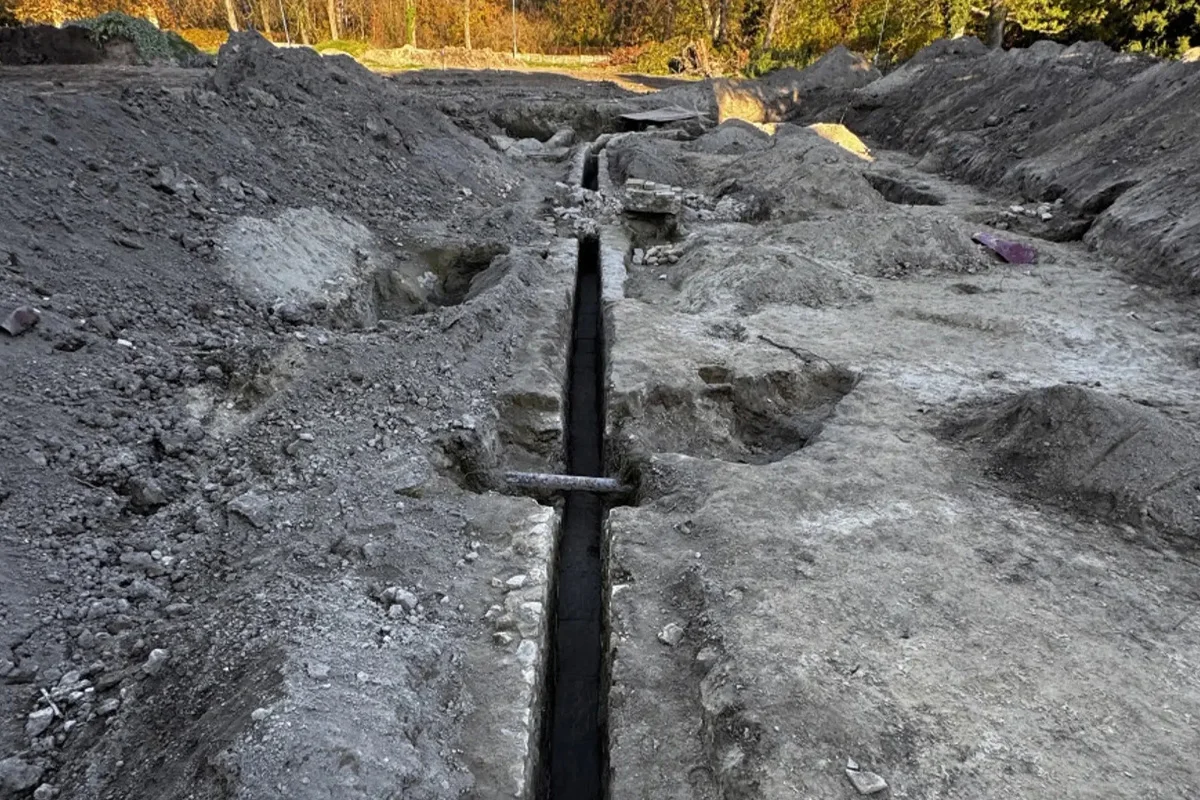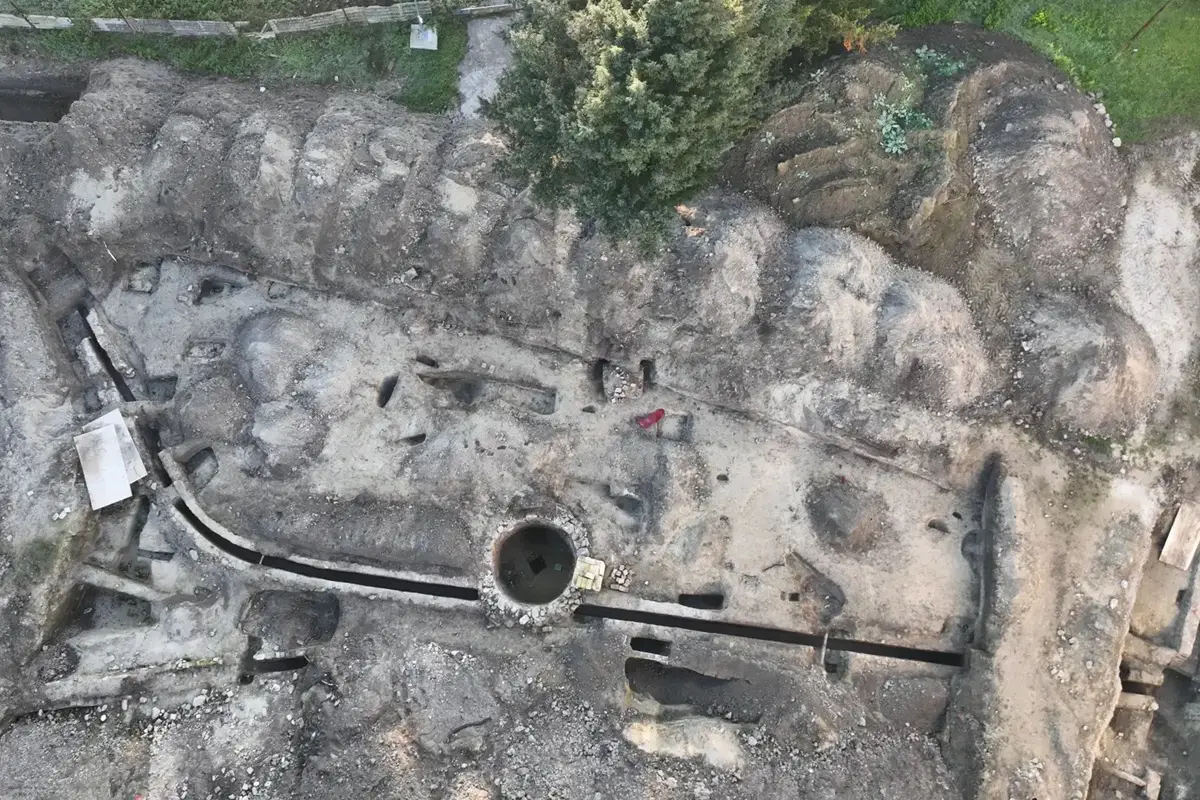Excavations at the historic Rusovce Manor in Bratislava have discovered the first known Roman aqueduct system in Slovakia.
Rusovce Manor is a 19th century Neo-Gothic manor inspired by English Gothic Revival architecture.
It was constructed on the site of a 16th-century manor house near the Roman settlement of Gerulata — a 2nd-century AD military camp that formed part of the frontier defences known as the “limes”.
Long neglected and inaccessible to the public, the historic manor and its surrounding grounds are now undergoing significant restoration following an investment of 110 million euros by the government of Slovakia.
According to a press statement issued by local authorities, archaeologists from Trnava University’s Department of Classical Archaeology have uncovered a Roman aqueduct during ongoing excavations on the manor grounds.

The aqueduct measures nearly 100 feet in length, has a 13-inch-wide channel lined with tegulae (flat tiles), and was designed to transport water on a subtle gradient towards where the manor is now located.
Some of the tegulae bear the manufacturers’ stamps, with one naming “C VAL CONST KAR” – from the workshops of Gaius Valerius Constans in Carnuntum (modern-day Austria), dating the aqueduct to around the 2nd century AD.
“We have documented 38 metres of the aqueduct so far. Its preservation is extraordinary,” said Associate Professor Erik Hrnčiarik from Trnava University’s Department of Classical Archaeology.
“The sheer scale of its construction is remarkable. Calculations suggest the Romans used at least 51 tonnes of stone and more than 80 tegulae. Some of these bricks bear the stamped names of their manufacturers, while others feature paw prints left by animals when they were left drying in the sun,” added Associate Professor Hrnčiarik.
Slovak authorities have confirmed that the aqueduct (the first of its kind discovered in Slovakia) will be preserved in place, with plans for a nearby technical service building revised to protect the ancient structure.”
Header Image Credit : TRUNI
Sources : Spectator





